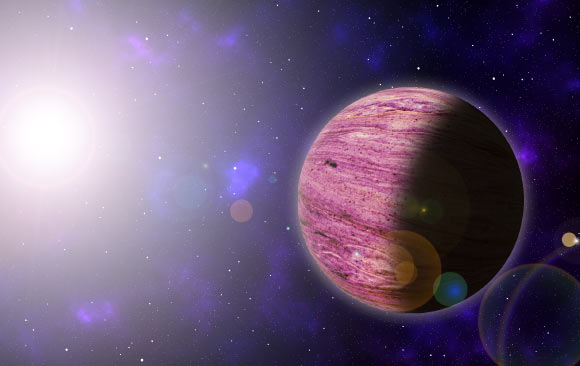The NASA Kepler spacecraft’s reborn K2 mission announced this week the discovery of 78 new potential exoplanets: 30 high-quality planet candidates and 48 objects that may be either planets or false positives.
One of the newly-identified planet candidates, HD 73344b, orbits a bright F dwarf star every 15 days.
Based on the amount of light that the planet blocks each time it passes in front of its star, astronomers estimate that HD 73344b is about 2.6 times the size of the Earth and 10 times as massive.
“We think it would probably be more like a smaller, hotter version of Uranus or Neptune,” said Dr. Ian Crossfield, an assistant professor of physics at MIT.
The planet is also likely very hot, with a temperature of around 2,000 degrees Fahrenheit (1,100 degrees Celsius).
The HD 73344 system lies at a fairly close distance of about 115 light-years away from Earth.
Given its proximity and the fact that it orbits a very bright star, which would be the brightest planet host ever discovered by the K2 mission, the scientists believe HD 73344b is an ideal candidate for follow-up studies to determine its atmospheric composition and other characteristics.
“The brightness of this star, combined with the speed with which its planetary candidate was identified, can help astronomers quickly zero in on even more specific features of this system,” Dr. Crossfield said.
The new analysis of the K2 data is also noteworthy for the speed with which it was performed.
Dr. Crossfield and colleagues were able to use existing tools developed at MIT to rapidly search through graphs of light intensity called ‘lightcurves’ from each of the 50,000 stars that K2 monitored in its two recent observing campaigns.
They quickly identified the planetary candidates and released the information to the astronomy community just weeks after the K2 mission made the raw data available. A typical analysis of this kind takes between several months and a year.
“Such a fast planet-search enables astronomers to follow up with ground-based telescopes much sooner than they otherwise would, giving them a chance to catch a glimpse of planetary candidates before the Earth passes by that particular patch of sky on its way around the Sun,” Dr. Crossfield said.
“Such speed will also be a necessity when scientists start receiving data from NASA’s Transiting Exoplanet Survey Satellite (TESS), which is designed to monitor nearby stars in 30-day swaths and will ultimately cover nearly the entire sky.”
The astronomers also validated four of the candidates as definite exoplanets.
“We have been observing other candidates that the study identified, including the possible planet orbiting HD 73344,” Dr. Crossfield said.
“We found one of the most exciting planets that K2 has found in its entire mission, and we did it more rapidly than any effort has done before,” he added.
“This is showing the path forward for how the TESS mission is going to do the same thing in spades, all over the entire sky, for the next several years.”
The results were recently published in the Astronomical Journal.
_____
Liang Yu et al. 2018. Planetary Candidates from K2 Campaign 16. AJ 156, 22; doi: 10.3847/1538-3881/aac6e6








